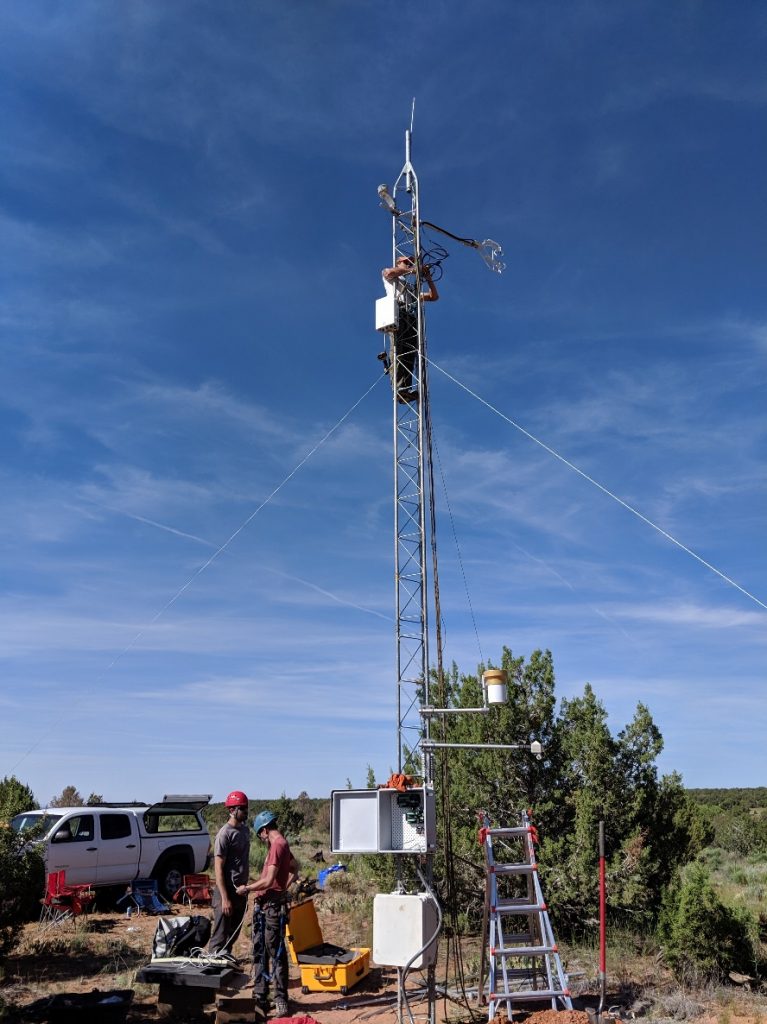
Figure 1: A Rapid Response Flux system was setup in June 2019 at Cedar Mesa in the middle of Bear’s Ears National Monument, Utah (new AmeriFlux site: US-CdM). From left to right: Ryan Bares, Dave Eiriksson and Steve Kannenberg on the tower at setup time (photo credit: Avery Driscoll).
The Science
How will forests cope as droughts become more frequent and severe? Piñon-juniper woodlands in the American Southwest are a model system for understanding the effects of drought on trees due to the frequent periods of water stress that characterize this region. Moreover, the dominant tree species in this ecosystem display markedly different drought sensitivities – piñon pine is known to be highly sensitive to drought while juniper is more resistant. As a result, elevated rates of piñon mortality were observed following a severe drought in 2002. However, widespread juniper mortality (and relatively little piñon mortality) has been observed in southeastern Utah following another severe drought in 2018 (see Figure 2), upending the paradigm of how this ecosystem should be affected by water stress.
The Impact
Piñon-juniper woodlands are the most common forest type in the American Southwest, encompassing 36 million acres spread across 10 states and Mexico. This important ecosystem has also been impacted by a few severe droughts in the last 20 years, compounded by rates of long-term warming that are some of the highest in the nation. Have these normally drought-tolerant junipers reached a tipping point beyond which they cannot recover? Given the counterintuitive nature of this mortality event, what is the fate of piñon-juniper woodlands in a warmer and drier future?
Summary
A team of scientists from the University of Utah has set up a network of plots to monitor ongoing juniper mortality and found that, in some areas, juniper mortality is nearing 50%. Pest or pathogen outbreaks, a usual suspect in cases of widespread tree mortality, appear unlikely to have caused this particular event. In an attempt to understand the physiological basis of juniper mortality, the scientists have taken numerous eco-physiological measurements including quantifying hydraulic damage (a key consequence of drought stress that can trigger mortality). Thanks to the AmeriFlux Rapid Response System program (https://ameriflux.lbl.gov/resources/rapid-response-flux-systems/), an eddy covariance tower has recently been installed at Cedar Mesa in the middle of Bear’s Ears National Monument, Utah (US-CdM) for a period of three years (June 2019 – May 2022), that will let the researchers understand how carbon and water fluxes are affected as this ecosystem recovers and/or mortality continues.
Contact
Steven A. Kannenberg, Postdoc Fellow, Biology, The University of Utah, Salt Lake City, s.kannenberg@utah.edu
Steven Kannenberg authored this post for the AmeriFlux Rapid Response Flux System Program.


No Comments
Be the first to start a conversation